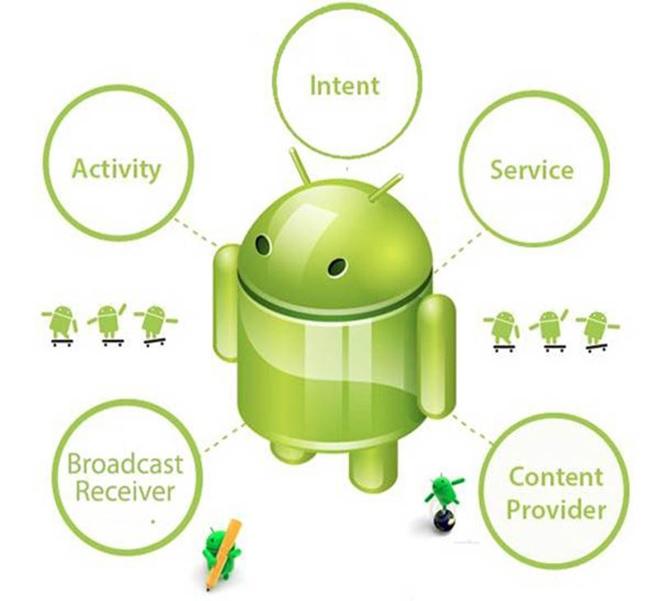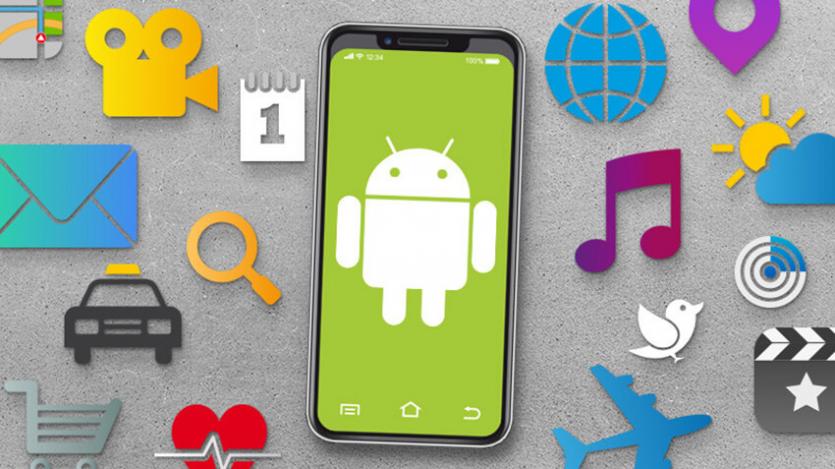Android Programmers Succeed In Their Work By Observing These 5 Principles
The Cool Features That Come With Apps Are What Make Users Interested In Apps. The Fact Is That These Are Applications That Make Mobile Phones Smarter And Make Life Easier For Us Through The Capabilities They Add To Smartphones.
Today, programmers profit from building mobile applications because they do not devote their entire time to working full-time in a company.
To be more precise, they write applications and upload them to software stores at low prices so that many users can buy them and make money that way.
This article will review the five main principles of Android application development that you should know before you start programming an Android application.
Principles of Android application development
In summary, these five principles are as follows:
- Master the target programming language.
- Work with the right tools and application development environment.
- Increase your knowledge of the structural components of the operating system and the programming language.
- Increase your understanding of technical topics such as strings, loaders, tasks, Android apps, etc.
- Use the right tools for coding.
1. Master the target programming language
Java and XML are the two main programming languages used to develop Android applications. Therefore, mastering these programming languages is necessary for developing an Android application. Some of the basics of the Java programming language are:
- Packages
- Objects and classes
- Inheritance and relationships
- Strings and numbers, generics
- Collections
- Synchronicity
Understanding the functionality of Java and XML will help you build a more robust and more beautiful Android application.
2. Familiarity with application development tools and appropriate environment
If you are moving towards Android application development, you must familiarize yourself with build automation tools and the integrated development environment before developing your application. You can use the integrated development environment of Android Studio or Eclipse for this purpose. The above tools will help you learn the basics and many tips and thus help to improve your code. My suggestion is to go for learning Apache Maven, Apache Ant, and Gradle, as they provide a robust set of tools to help manage builds.
It is also essential to be familiar with the tools and concepts of resource control. Learn git and then create a git-source repository (by creating an account on Bitbucket or GitHub). Since Gate is a repository of large code, I recommend that you learn the basics and how to work with the above tools.
3. Application components
Application components are the basic building blocks of Android application development. Each of these components has a specific application that the Android operating system can use to communicate with your application. Although they are known as a particular entity and have a specific role, some are interdependent, and not all are actual entry points.
There are five different app components, each used for a specific application and has its life cycle. These components are as follows:
- Activities: A component that displays a page with a user interface (for example, an email application may have an action that displays a list of new emails, another activity for writing emails, and another for reading emails). Activities work together to create a coherent user experience in the program. However, they work independently of each other.
- Services: A component that runs in the background monitors remote processes or operations that need to be run long. Note that the above feature does not provide a user interface (for example, it may play music in the background while the user is in another application).
- Content providers: A component that manages a standard set of application data. Through this component, the data you store in a file system, web, SQLite database, etc., can be retrieved or modified (as long as the content provider allows). This component is also used to write and read data that is not shared and is a private application.
- Broadcast receivers: A component that responds to system-wide broadcast announcements. Most receivers are system-derived, and although they do not display a user interface, they can generate a status bar notification that alerts the user in the event of a spread event. This component is a gateway to other members and does minor work.
- Activating components: A concurrent message, called an intent, activates three of the four elements (i.e., services, activities, and broadcast receivers). Intents connect separate components at runtime, whether the member belongs to your application.
4. Fragmentations, Android Application, Threads, Loaders, and Tasks
Android is an ecosystem consisting of devices and different versions of this operating system installed on the devices. Note that if your app supports more devices and interpretations of the Android operating system, it will require more repair, maintenance, and testing and will cost time and money. The opposite is also true, and if you are limited to a specific version of Android, you have less trouble, but equally, fewer users can use your application.
Your app must have the ability to support a wide range of sensors or UI capabilities of AndroidHas to offer. It would help if you also had the right fonts, assets, and layouts to ensure you provide the best possible user experience with various features. All Android apps have one app class, one or more activities, and more fragments.
If you want to provide an outstanding and smooth user interface, always ensure that this does not reduce the application’s performance. Sometimes you may have background services that need to be run continuously, but sometimes you may not. Therefore, extended operations (computing, I / O, networking, etc.) should be performed asynchronously in the background (mainly in a different execution string). That’s why you need to spend enough time on the topic of synchronous and non-synchronous Java language.
5. Choose the right tools to suit your needs
The simple tools you need to develop Android applications are just a Mac or Windows PC, Linux distributions, Eclipse, ADT plug-ins, and Android SDK or Android Studio, all of which are free. To learn how to set up your development environment, you can review the installation guide on Google, which provides complete information in this area. Android has unique parameters that you must consider when writing an Android application. Some of them are:
- Performance and responsiveness: You must constantly respond to user input within five seconds. Otherwise, your operating system will ANR. (In this case, the only option to terminate the program is to force it to close.)
- Users observe delays of more than 100 milliseconds: Blocking the interface string should never be because it is only one.
- Limited resources: Wake-locks (a mechanism that forces the device to do a specific task despite the battery manager’s recommendation to put the device to sleep) must be used properly. Do not survey hardware (such as GPS or accelerometers) unnecessarily, as they will drain the battery prematurely.
last word
Statistics show that the use of mobile phones has increased. For example, 77% of Americans today own a smartphone, and apps are where they spend most of their time. In fact, in 2017, 197 billion apps were downloaded, ensuring that a job as an Android app developer is a sustainable job with plenty of growth opportunities.
There is a lot to learn regarding Android app development, so keep in mind that you can learn the various concepts of Android programming by relying on efficient training courses. Are. More precisely, if you work on the basics of the Android operating system and other skills related to Android programming, you will be able to build money-making applications quickly.


